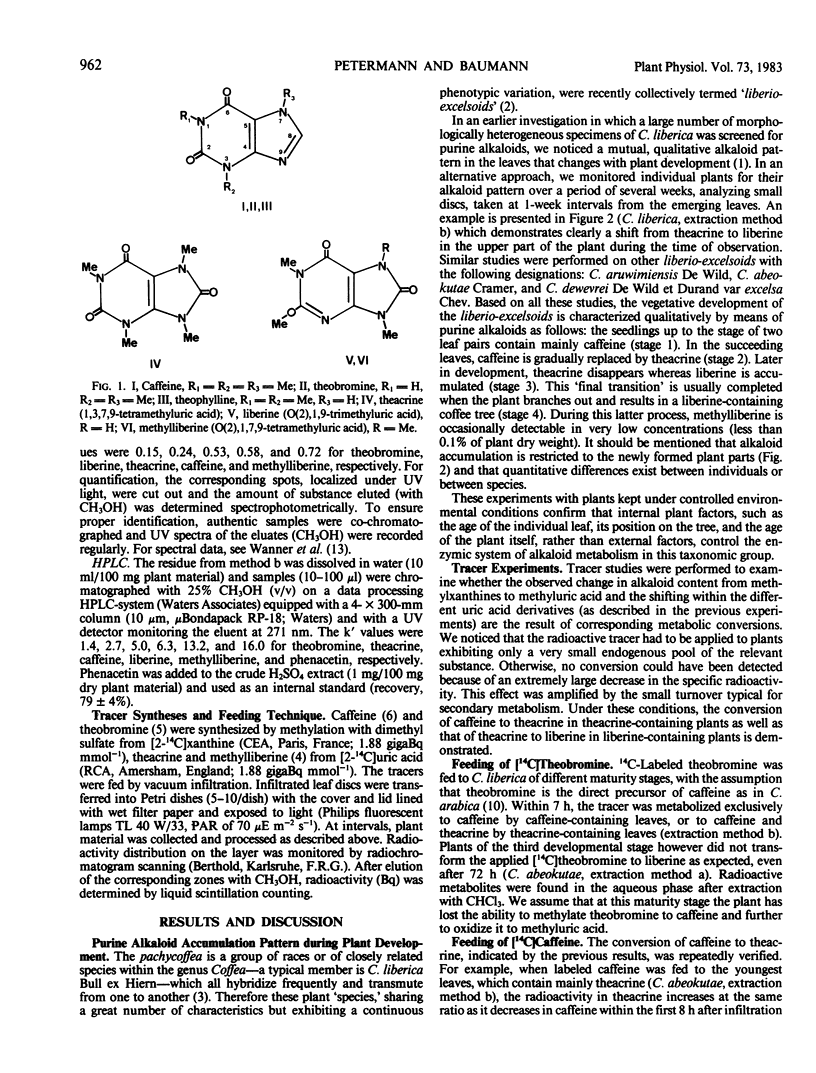Abstract
Metabolism of purine alkaloids in the leaves of Coffea dewevrei De Wild et Durand var excelsa Chev, Coffea liberica Bull ex Hiern and Coffea abeokutae Cramer was studied by analyzing leaf discs collected during vegetative development and by feeding the following radioactive tracers: [14C]theobromine, [14C]caffeine, and [14C]theacrine (1,3,7,9-tetramethyluric acid). Their principal metabolites were quantitatively and qualitatively determined. All three species convert the precursors to the same radioactive products, and proceed through the same four maturity stages characterized by the alkaloid accumulation pattern and by a particular transformation potency: (stage 1) young plant accumulating caffeine, transforms theobromine to caffeine; (stage 2) caffeine is gradually replaced by theacrine, theobromine and caffeine are converted to theacrine; (stage 3) theacrine disappears whereas liberine (O(2), 1,9-thrimethyluric acid) accumulates, theacrine is metabolized to liberine; (stage 4) branched-out plant containing liberine but no theacrine, caffeine is converted rapidly to liberine via theacrine. Methylliberine (O(2),1,7,9-tetramethyluric acid), presumably the direct precursor of liberine, is occasionally found in low concentrations at stage 3 and 4.
The collective term `liberio-excelsoid' introduced by geneticists for the numerous races or species of Pachycoffea is in accordance with the phytochemical equality found in this work.
Full text
PDF



Selected References
These references are in PubMed. This may not be the complete list of references from this article.
- Kihlman B. A. 1,3,7,9-tetramethyluric acid--a chromosome-damaging agent occurring as a natural metabolite in certain caffeine-producing plants. Mutat Res. 1977;39(3-4):297–315. doi: 10.1016/0165-1110(77)90010-0. [DOI] [PubMed] [Google Scholar]


